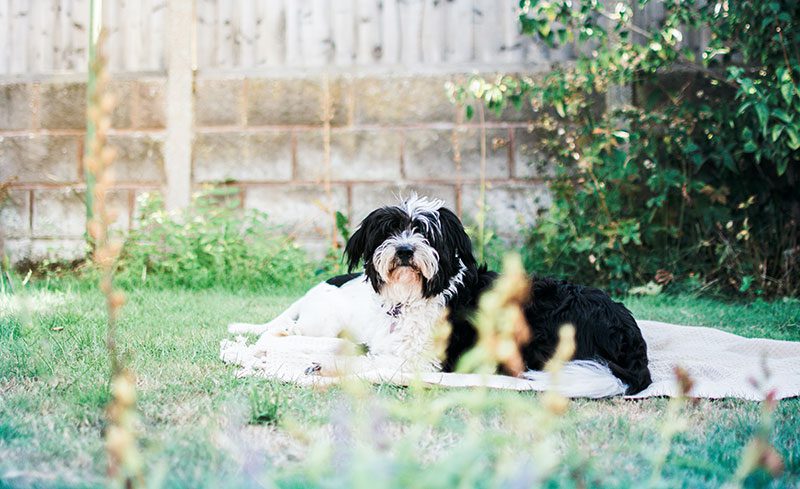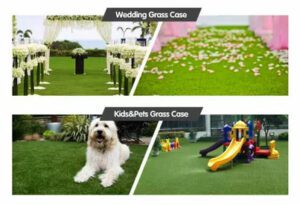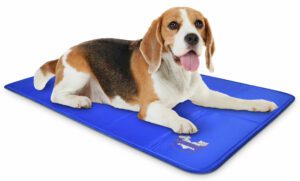It’s no secret that dogs are great additions to any family, especially in a home with children. They make life great, but unfortunately, these fluffy friends are also susceptible to many hazards that can be destructive without warning. Your entire family should take precautionary measures and dog-proof your backyard.
Dogs love to dig, run around and chew on things. If you think about it, there are many potential problems to deal with. Here are some simple ways to dog-proof your backyard.
1. Fence Your Swimming Pool
If you have a pool at home, keeping your dog out of the water is important, so you’ll want to fence it off. You can place a tall fence around your pool that can be up to four feet high. Use an electric wire or an invisible fence if your dog has a habit of jumping the fence.
Another precautionary measure that you can take is to create an invisible fence. This makes it a little more difficult for your dog to sneak into the pool area because they’ll have to dig underneath the fence. For example, place some rebar into the ground near the corner of the fence and bury it underground. Your dog will instinctively dig its way under it, but they won’t be able to remove it.
If your dog is a good swimmer and likes to jump into the pool, do not make it easy. Let them access the pool in your presence, but lock it up when you’re not there.
2. Keep Electric Cords Out of Reach
Electrical cords can be dangerous to your dog. There have been many cases where dogs have chewed through cords and have been electrocuted. Keep your cords out of reach by storing them in cabinets or bins with a lock or by purchasing cord covers that can be placed over the power cords so your dog cannot get near them.
Also, remember that choking is a real concern with your dog. If you leave cords hanging limply, your dog could easily chew on them and get them caught in their throat. It’s best to tie the dangling cords up so that there’s no way for your dog to chew on them.
3. Install Artificial Grass
Installing artificial grass is a great way to make it more difficult for dogs to dig up your yard. It’s also a safe surface for them to be on. Artificial grass is not too hard on their feet and is a great surface that won’t damage your dog’s paws.
Installing artificial turf will also help you keep the concrete around your pool clean and free of dirt because the dogs can’t dig down to the cracks. It’s also easier to maintain, which will keep your dog’s feet a safe distance from the pool area.
If you want to purchase the best artificial grass for dog runs, you can search online and choose from many options. Many styles include realistic grass with a plush feel, making it easier on your dog’s feet.
4. Always Keep Your Yard Mowed
Letting your yard get overgrown is the worst thing you can do with a dog. Keeping your lawn mowed and trimmed will give your dog’s feet a safe place. That way, they won’t get caught on branches or sticks that could scratch their paws or skin.
Tall branches and grasses contribute to ticks, fleas or other unwanted pests. These pests may then get onto your dog’s body and infect them. If you’re unsure that you can protect your dog from these pests, keeping tall grasses trimmed down and low bushes are best.
5. Pick Up Garbage Before Your Dog Can Get To It
Litter is a hazard for both children and dogs. If you have trash cans in your backyard, ensure they are not accessible by your dog if there’s no one around to watch them. They can be very curious, and if they find a trash can, they will likely try to get inside it.
Invest in an automatic trash can to keep your dog from getting into garbage and eating it. This type can have a receptacle underneath that can be accessed only by a mechanism. Your dog cannot get into it, even if they try to open the lid. This is especially important for those people who have small children and dogs in their homes.
6. Plant Flowers That Are Safe for Your Dogs
Planting flowers in your yard is an excellent way to add a little decoration to your home. However, wide varieties of flowers can be dangerous for your dog.
For instance, tulips and daffodils are toxic to dogs and can cause liver damage if they eat them. Roses and peonies are also harmful and can cause an allergic reaction.
If you want to use flowers that are safe for your dog, such as dahlias before they bloom, consider planting them in containers so they can’t overgrow. If you choose to plant toxic flowers, you may want to place the bulbs in containers and ensure your dog cannot get into them.
7. Provide Shade and Water for Your Dog
Dogs are known for being warm-blooded and their bodies produce a lot of heat. If exposed to the elements, they will likely be uncomfortable and take steps to stay as cool as possible. They may need shelter from the sun and a place to escape the hot weather.
If you live in an area with hot springs or hot, sunny days, your dog might not want to be outdoors on those days. Provide a cooling pad or a dog pool to cool down if they feel too hot.
Water is another thing that’s important for your dog. Let them access water in the summertime so they can stay hydrated and drink when needed.
8. Make Sure Your Dog Has a Safe Spot to Sleep
Your yard can be dangerous for dogs if they are curious and take risks. If you have a pool or leave your doors open, your dog might wander off and get into trouble. That’s why it’s important to provide a safe spot for them to sleep while they’re outdoors in your yard.
You can make them a dog house, an enclosed space they can’t get out of and are protected in. This makes it easier to keep a closer eye on them and ensure they don’t get into trouble when you’re not around.
Conclusion
Ensuring your dog is safe in the yard is important for their physical and mental health. If you have any concerns, seek medical attention for your dog. A veterinarian can help keep your dog healthy and see if there are any signs that they may have been injured in the yard or by a pool. Not only will you want to ensure your dog is healthy, but also that they’re safe while at home or playing outside.




